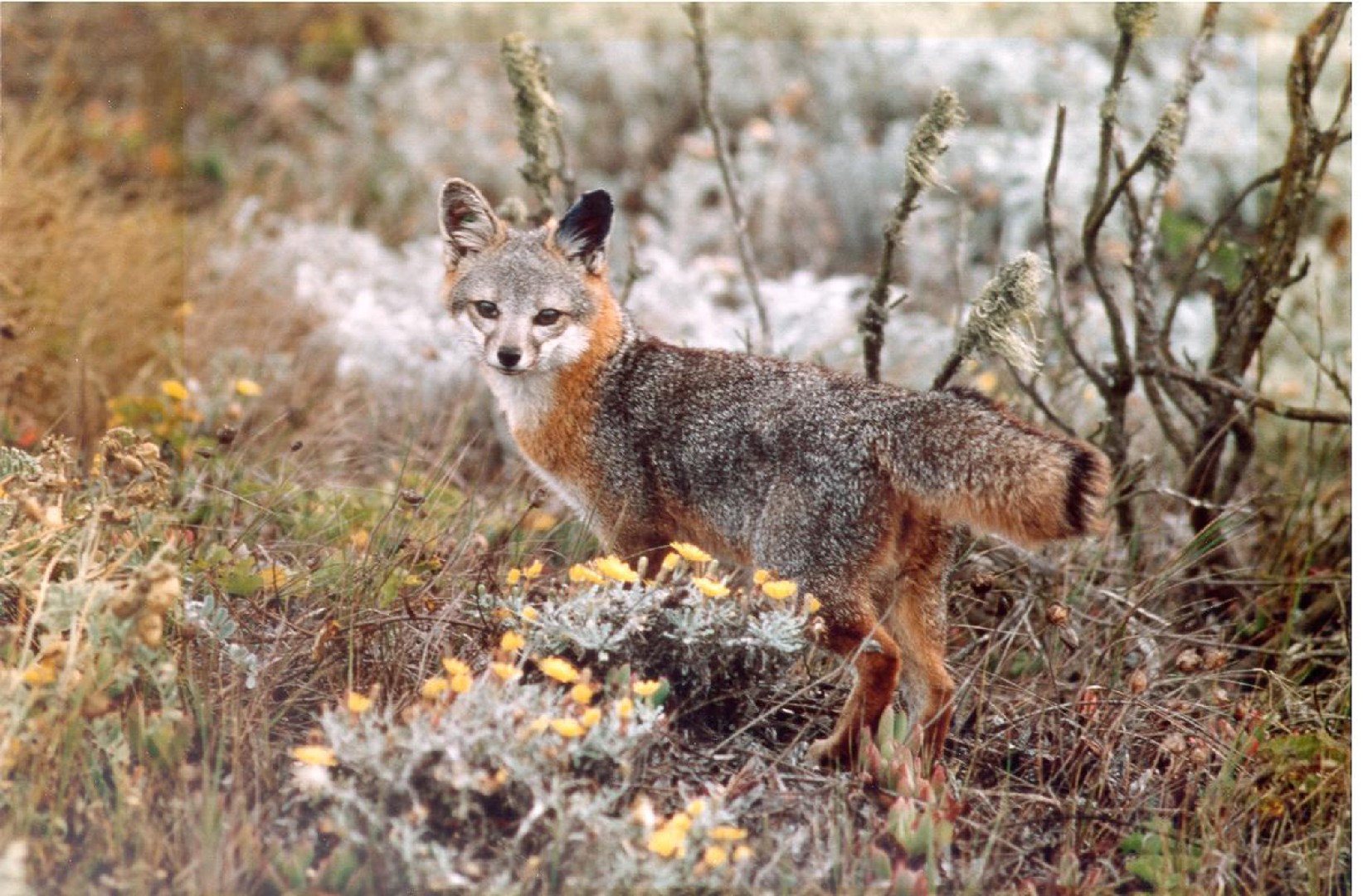Island fox
A species of Tailed dog, Also known as Short-tailed fox, Channel islands fox, California channel islands fox Scientific name : Urocyon littoralis Genus : Tailed dog
Island fox, A species of Tailed dog
Also known as:
Short-tailed fox, Channel islands fox, California channel islands fox
Scientific name: Urocyon littoralis
Genus: Tailed dog
Content
Description General Info
 Photo By Pacific Southwest Region USFWS , used under CC-BY-2.0 /Cropped and compressed from original
Photo By Pacific Southwest Region USFWS , used under CC-BY-2.0 /Cropped and compressed from original Description
The island fox is significantly smaller than the gray fox and is probably the smallest fox in North America, averaging slightly smaller than the swift and kit foxes. Typically, the head-and-body length is 48–50 cm (19–19.5 in), shoulder height 12–15 cm (4.5–6 in), and the tail is 11–29 cm (4.5–11.5 in) long, which is notably shorter than the 27–44 cm (10.5–17.5 in) tail of the gray fox. This is due to the fact that the island fox generally has two fewer tail vertebrae than the gray fox. The island fox weighs between 1 and 2.8 kg (2.2 and 6.2 lb). The male is always larger than the female. The largest of the subspecies occurs on Santa Catalina Island and the smallest on Santa Cruz Island. The island fox has gray fur on its head, a ruddy red coloring on its sides, white fur on its belly, throat and the lower half of its face, and a black stripe on the dorsal surface of its tail. In general the coat is darker and duller hued than that of the gray fox. The island fox molts once a year between August and November. Before the first molt pups are woolly and have a generally darker coat than adult foxes. A brown phase, with the grey and black fur of the body replaced by a sandy brown and a deeper brown, may occur in the San Clemente Island and San Nicolas Island populations. It is unclear if this is a true color phase, a change that occurs with age, or possibly a change that occurs because of interactions with Opuntia cactus spines that become embedded in the pelt. 
General Info
Lifespan
8-10 years
Diet
Island fox primarily nourishes itself on insects, fruits, and seeds. Due to its opportunistic foraging behavior, it also includes other insects, small mammals, birds, and reptiles in its varied diet.
Appearance
Island fox is a small fox with an elongated body and dense, velvety fur. Its coat is an ashy grey, marked by a dark stripe along its bushy tail and faint stripes on its legs. Unlike other foxes, it has semi-retractable claws and the ability to climb trees. There's no significant visual difference between genders or stages of life.
Behavior
Island fox is a nocturnal and solitary species, traditionally hunting alone at night and resting in dens during the day. Its behavior includes foraging for plant-based foods and small animals. Notably, it marks territory with scent, showcasing a unique adaptation to its island habitats. Island fox is also distinctive for its swimming ability.
Population
Increasing

 Photo By Pacific Southwest Region USFWS , used under CC-BY-2.0 /Cropped and compressed from original
Photo By Pacific Southwest Region USFWS , used under CC-BY-2.0 /Cropped and compressed from original